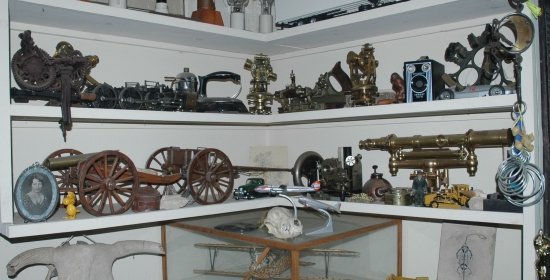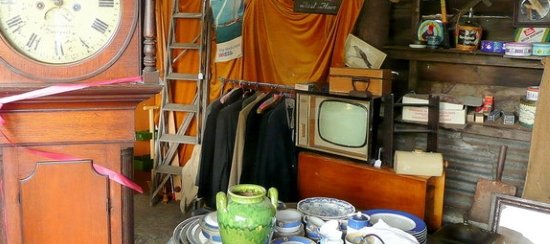But cautiously will taste its stores reveal;
Its greatest art is aptly to conceal;
To lead, with secret guile, the prying sight
To where component parts may best unite
And form one beauteous, nicely blended whole,
To charm the eye and captivate the soul.
Richard Payne Knight (1750-1824), 1795
Mid Victorian photography can create an impression that many photographers were conservative in choosing subjects. To a large degree this is true, yet technical and cultural changes influenced not only their choice of subject matter but also how they framed and photographed it. Whether the subjects were antiquities, architecture, still life or landscape, these photographs were never taken without a great deal of thought and commitment.
The Picturesque view, one of the most popular subjects for photographers in Britain, is a perfect example. The term ‘Picturesque’ achieved immense popularity in the late eighteenth century and dominated artistic circles in the first half of the nineteenth century. Somewhat confusingly it was used casually by people with many and varied interests. Tourists, poets or artists used it to describe things as varied as trees, a group of mountains, a village square, a medieval ruin, or a river. This casual usage continued over the course of the century to the point where the general impression of the word today is one of images possessing pleasing and interesting qualities of composition, form and colour but not achieving the heights of beauty or art. However, this general impression has obscured the solidity and rigour with which it was applied in the arts in the eighteenth and nineteenth centuries and its importance to photographers in the Mid Victorian era.
In Britain, the landscape, whether adorned with cottages or ruins, or simply a group of trees, had been a favourite subject for amateur photographers from the 1840s. In these early years, photography had yet to define a graphic language for itself. Early photographers relied for the most part on visual conventions already formulated in the arts. Of these, the Picturesque was the most pervasive British visual style and it provided a template for landscape photography, which continued into the 1850s when photography started to reach a broader audience. This Picturesque view of nature was not an alien concept, for many photographers, both amateur and professional, had experience in engraving, watercolour and painting. For others, photography offered a perfect opportunity to put into practice the widely published theories which they read in books and travel journals.
The Picturesque was a mainly British phenomenon formulated over the late 1700s and early 1800s by writers such as the Rev. William Gilpin, Sir Uvedale Price and Richard Payne Knight, whose theories gave people new ways to look at and interpret the landscape. From the 1740s, artists began to stress the importance of the Picturesque and recording nature as it is, rather than painting scenes from classical or religious texts. By 1808 it was already a phenomenon popular enough for the critic Richard Payne Knight to say the Picturesque had become ‘… extremely common and familiar in our own tongue; and which, like all other foreign words, is frequently employed improperly’.
These critics maintained a certain elite interpretation, in which the Picturesque took the smoothness of the beautiful and horror of the sublime to create a cult of wildness and irregularity that could challenge classical traditions while still emphasising the importance of scientific observation.
From the 1840s onward, amateur photographers carefully pasted engravings, etchings and photographs next to each other in albums. From these we can see their interests were in both the artistic merit of images and in their documentary value. By the middle of the 1850s, particularly with the introduction of the collodion plate, both amateurs and professionals started to produce photographs that combined the Picturesque with a documentary clarity, particularly in the purely landscape photograph.
While John Ruskin and other critics in the 1850s admitted there was a place for photography in the arts, they felt it was best suited for copying illustrations or for budding artists to make sketches from. For Ruskin the ideal landscape remained in the artist’s mind and not in the real world in front of the canvas. This presented a fundamental problem to landscape photographers applying Picturesque principles; they were not able to re-arrange the components of the work except through the lens of their camera. Yet many of these early photographers took up the challenge and applied these artistic principles to their compositions with startling success.
British amateur and professional photographers in the 1850s continued to use Picturesque conventions and the quaint cottage, the gnarled old oak, rugged coastline and vine-covered ruins all became grist for the photographer’s mill. Hazy photographs of the 1840s gave way to clearer and more precise photographs of the 1850s which combined detail with artistry, and were acknowledged as being the best in the world.
By the 1870s interest in the Picturesque waned, but some of the best works produced by the masters of photography were Picturesque landscape views. Roger Fenton, William England, Russell Sedgfield and Francis Bedford all produced series of similar scenery, while some locations such as Tintern Abbey were photographed by almost every well-known British photographer. Rather than providing a tedious and repetitious view of the landscape, the immense skill with which they applied Picturesque conventions to their work created some of the most enduring images of Britain.
The exhibition Virtual Empire: Stereo Photography in Britain and Australia 1851-1879 contains Picturesque works by some of Britain and Australia’s earliest photographers. Visitors can see their works as the photographers intended them to be seen, in 3D. Virtual Empire is open Monday-Friday 9 am-4 pm, at the Macleay Museum, University of Sydney until March 2004; free entry.



